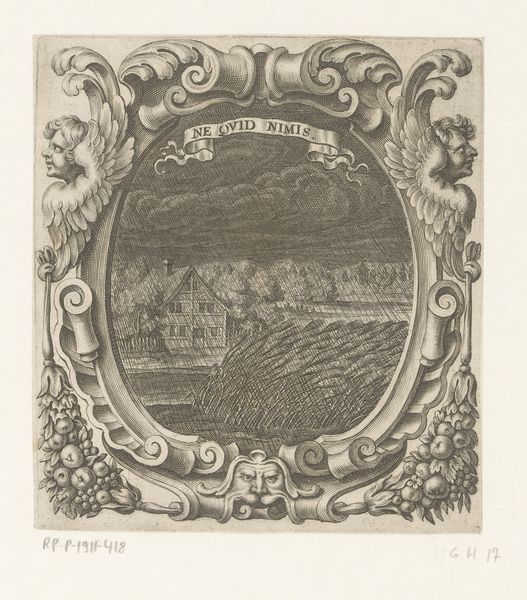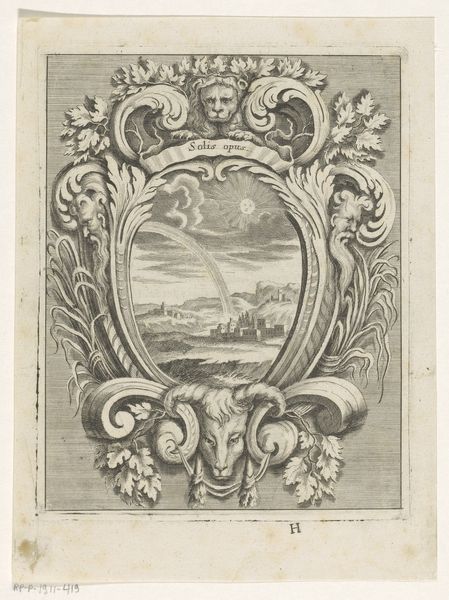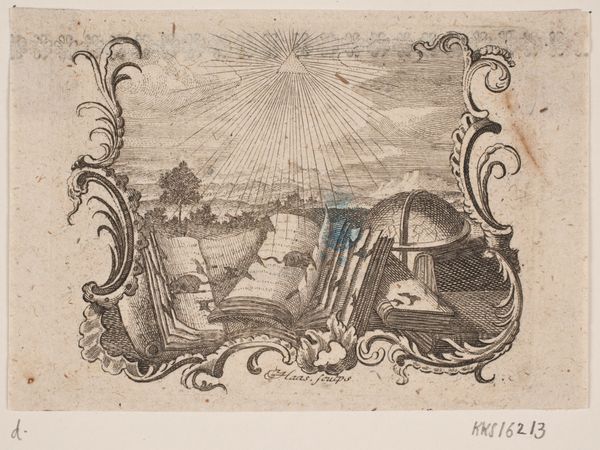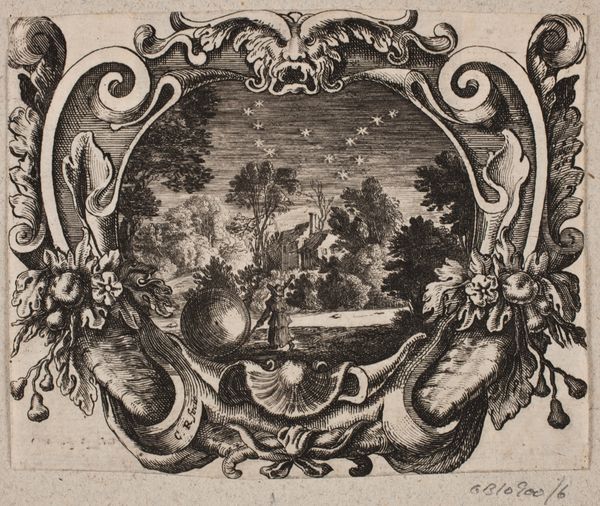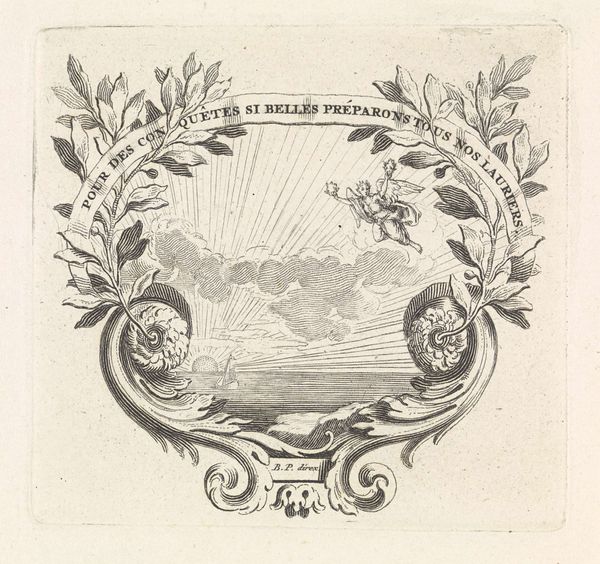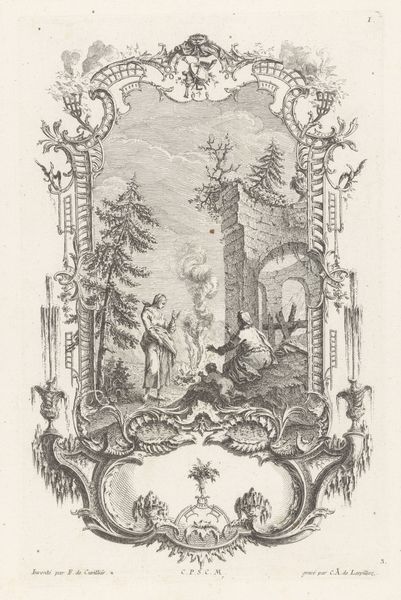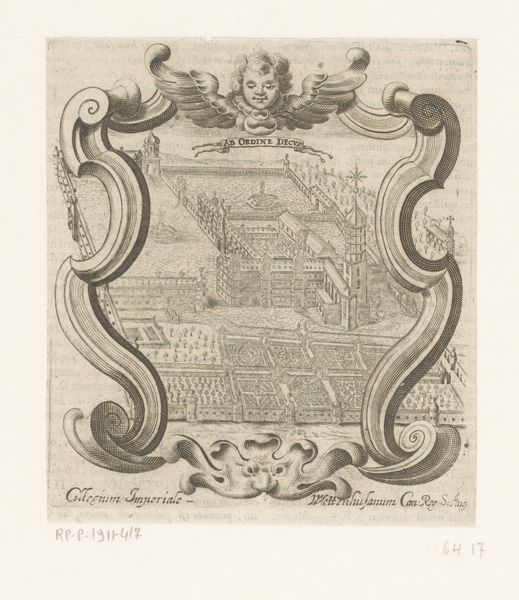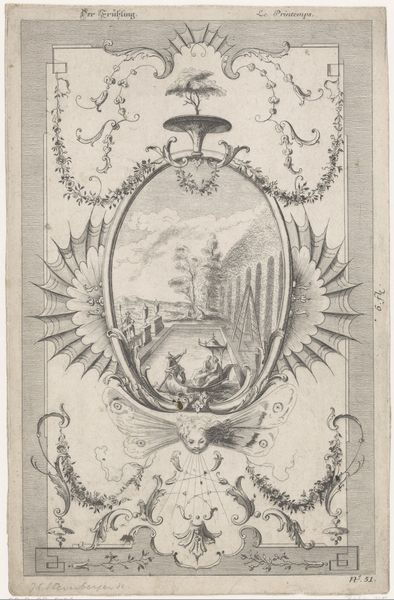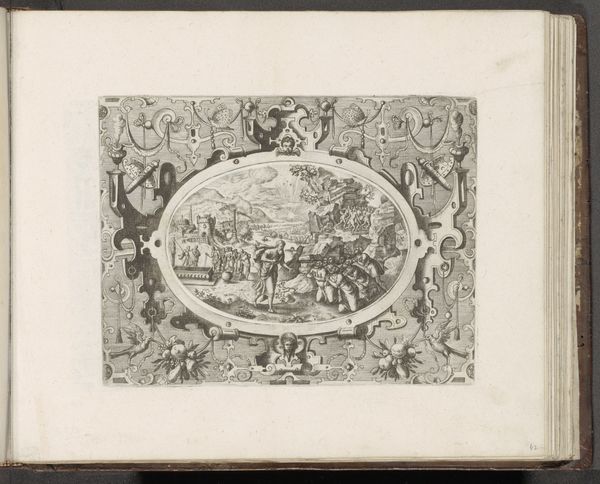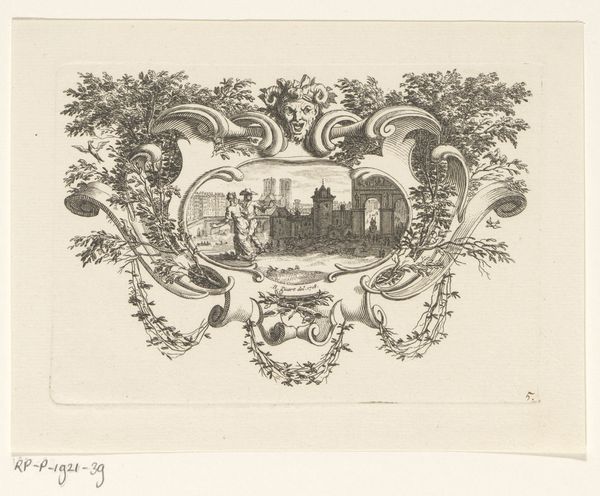
engraving
#
allegory
#
baroque
#
landscape
#
history-painting
#
engraving
Dimensions: width 123 mm, height 141 mm
Copyright: Rijks Museum: Open Domain
Curator: Let’s take a look at this engraving from 1681, “Leeuw heerst over de wereld” or “The Lion Rules the World,” created by Johann Eckhard Löffler. The piece utilizes dense imagery contained within an elaborate frame. What's your first impression? Editor: Intricate and bold! The contrasting elements—the fiery sun and the dominating lion—feel quite assertive, overshadowing the serene landscape below. There's a distinct symbolic weight to the image. Curator: Absolutely. The era it comes from, the late 17th century, saw significant shifts in European power structures, and allegories like these served as a form of commentary. We see this engraving participating in that visual language, suggesting power and dominion. Editor: Indeed, the lion, an archetypal symbol of strength and kingship, is placed above the sun with the facial features. It evokes a feeling of absolute power—perhaps suggesting divinely ordained rule, amplified by the sun, itself a source of life and energy in many cultures. Curator: Consider how the choice of an engraving, as a relatively reproducible medium, allows for broader dissemination of its message. Images like this were vital for shaping public opinion and justifying political realities, especially the idea of rulers being blessed, if not chosen, by divine power. Editor: And notice the Latin inscription, “Geminat Incendia,” which could translate to "It Doubles the Flames." This suggests a dangerous potential, or even the doubling of impact; linking back to the lion's symbolic association with royalty and the often fierce and overwhelming impact rulers had on societies. Curator: Exactly! It’s worth exploring the Baroque influences here. The frame itself, dripping with ornamentation and symbols, makes it not merely a scene but an assertion, a declaration of principles through elaborate visual means. The choice to have a historical scene act as a backdrop gives the piece another layer of credibility, in an almost meta-commentary. Editor: Looking at the angel, at the apex of the image. It acts as an emblem of the divine, sanctifying the actions depicted. It all creates an intentional visual language that emphasizes dominance. I feel like the intent here is fairly clear. Curator: The effectiveness of allegorical art lies in that clear intention; art was made for, by, and for institutions of power, but these were nonetheless highly skillful commentaries on historical issues! Editor: That blend of art and intent does make one stop to reflect, even centuries later. Thank you. Curator: The pleasure was mine.
Comments
No comments
Be the first to comment and join the conversation on the ultimate creative platform.


